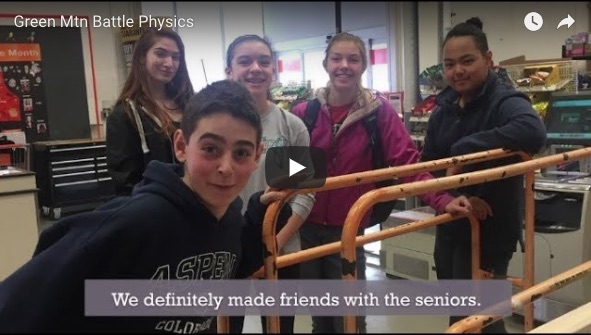Come for the math, stay for the slingshots!
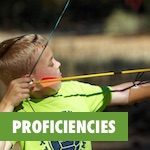 Green Mountain 7th graders and HS physics students apply math and science to a real-world problem: hitting targets. They collaborate in multi-age teams to design and build projectile launchers. Then they calculate trajectories and calibrate their creations before taking aim.
Green Mountain 7th graders and HS physics students apply math and science to a real-world problem: hitting targets. They collaborate in multi-age teams to design and build projectile launchers. Then they calculate trajectories and calibrate their creations before taking aim.
Each spring the students take over the Green Mountain Union High School cafeteria to stage an epic competition: Battle Physics. The tournament is a test of their skills: designing, building, computing, and calibrating. The winning team will have to do all of these things well to hit the most targets.

The 4 C’s of Battle Physics:
1. Collaboration!
Teams of seventh-grade math students collaborate with high school physics students (11-12th graders) to design and build projectile launchers. Yes, projectile launchers. Catapults! Trebuchets! Pneumatic flingers! Slingshots! All are fair game.
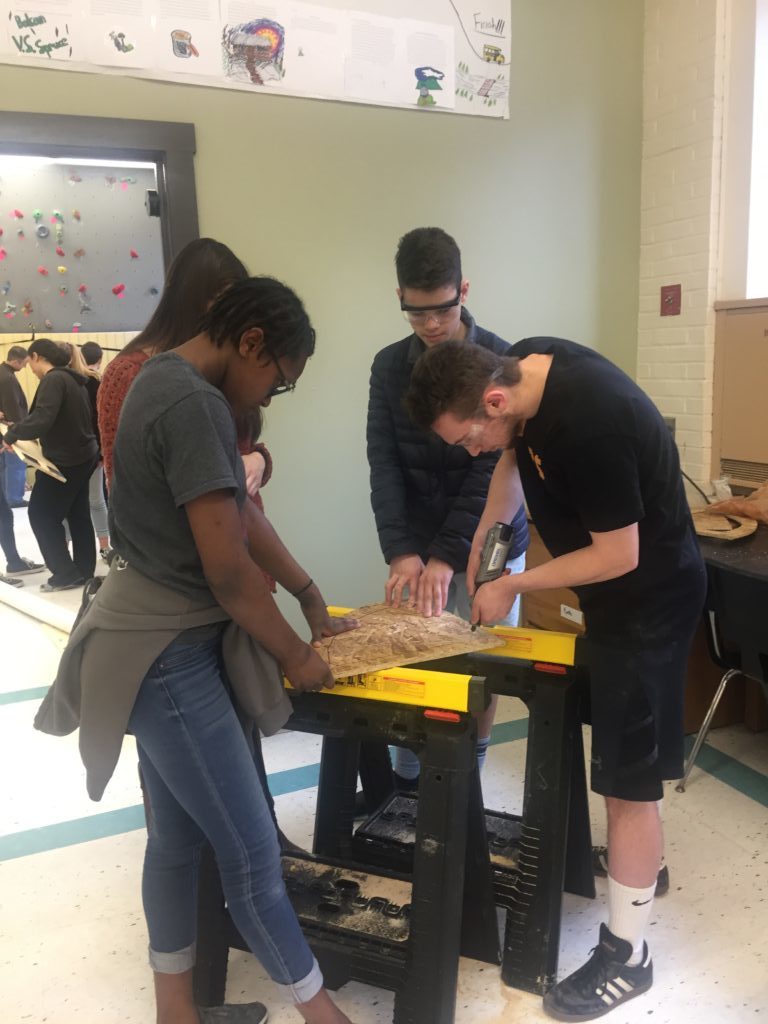
2. Consultation!
Along the way, teams present their designs to a panel of experts for feedback.
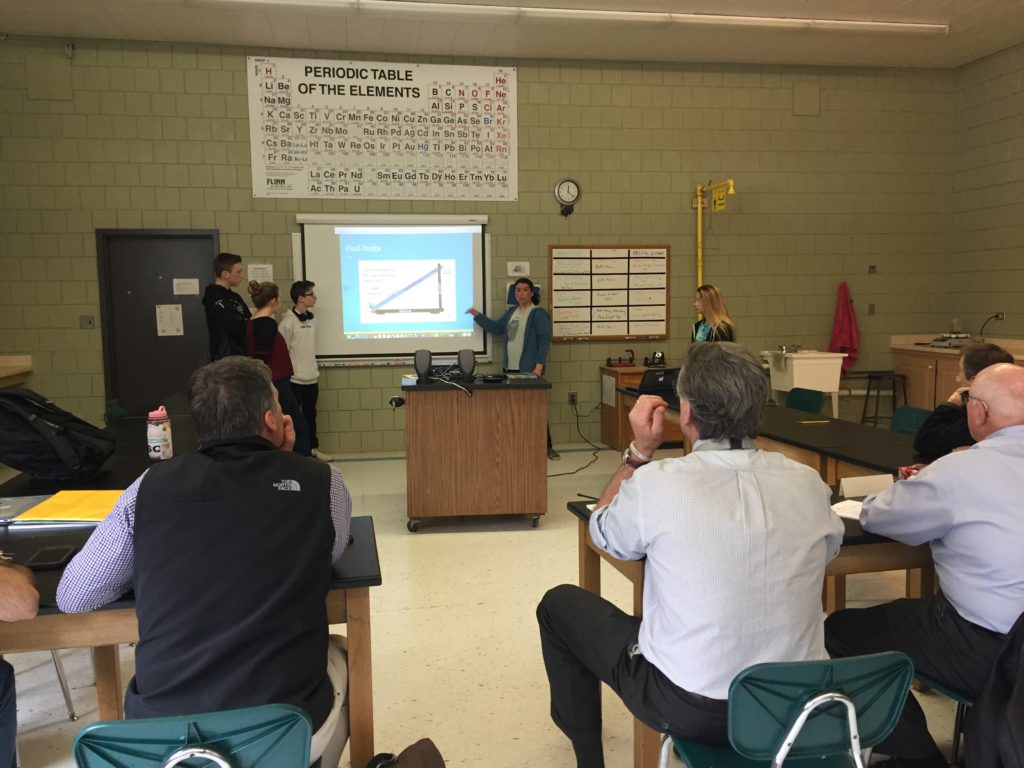
3. Calculation!
This unit is all about applied math and physics. Students use complex calculations to calibrate their launchers. Math and science are purposeful and relevant at every step of the process.
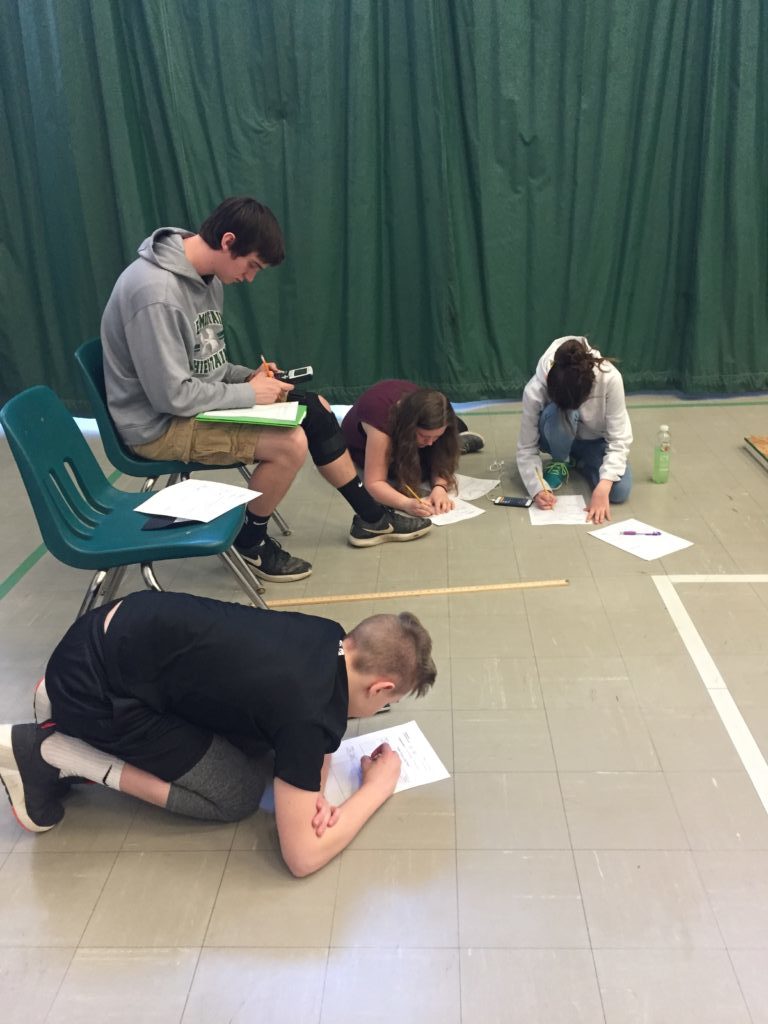
4. Competition!
The grand finale is a several days long “battle” to see which launcher can hit the most targets. The team to beat: the teachers! The two teachers behind this project also build their own projectile launcher, modestly named “Dream Crusher”.
https://twitter.com/JPhillipsVT/status/989912527374110720
The project is in its fourth year and its fourth iteration.
Each year Mr. Garvin and Ms. Bushey reflect on student work and tweak their plans. They’ve added a panel of experts to give feedback on initial designs and a trip to a local hardware store so students can select their own materials.
Ms algebra & hs physics on a field trip to Home Depot to pick up materials. #battlephysics @JPhillipsVT @MichaelEppolito pic.twitter.com/6BNZ3tH8a6
— Ally Oswald (@OswaldAlly) April 7, 2017
The student teams design their launcher using the following steps:
- Identify the problem
- Research potential solutions
- Develop solutions
- Select a solution based on cost, availability of materials, time
- Present your design to a committee of experts
- Revise and construct
- Test including calculations; initial velocity, angle of projection, distance.
- Redesign
Consult the experts
After reflecting on the first implementation, Garvin and Bushey realized that students would build better launchers if they solicited feedback from experts, so they added step 5: present your design to a committee of experts.
Now, each year a panel of locals, including mechanics, engineers, and part-time tinkerers, as well as the school principal and a district administrator, provide feedback to teams during the pre-build process, and teams use this feedback to improve their designs.
This raises the stakes for student work: they have to be prepared to unpack their thinking and share their design with that panel. And because of the expert advice, they build better launchers.
Bushey was also initially concerned about a collaborative project between her 7th-grade students and high school students. But one of the biggest surprises for her was the way in which collaboration brought out the best in all the students. High school students are nurturing and kind, and middle school students step up and work hard to meet the challenges.
[huge_it_slider id=”23 “]
Let the competition — and the calculations — begin!
https://twitter.com/JPhillipsVT/status/989911726668898304
The final tournament takes four days and has very specific rules and scoring methods:
Each team has 10 projectiles to launch.
Each team has four targets to place on their territory.
Targets are placed at one meter intervals, beginning with a zone 2-3 meters from the launcher. The height of the targets can vary from 0-2 meters.
Points for each target are as follows:
- 2-3 m target – 1 point
- 3-4 m target – 2 points
- 4-5 m target – 2 points
- 5-6 m target – 3 points
Once a target is hit, you may not hit the same target again until all of the other targets have been hit.
Each team will have a 10 minute period of time before each match to conduct measurements of the opposing team’s target zone. No test shots may be fired. The launching will occur the last 20 minutes of class.
Battle Physics is a remarkably quiet sport.
Students cluster in groups around their launchers, intensely working out the math, comparing answers, and calculating trajectories. It’s nearly entirely silent in the cafeteria as teams focus hard on determining the angles and tension needed to hit their targets.
Furiously calculating #battlephysics pic.twitter.com/R7blgQJqfS
— Ally Oswald (@OswaldAlly) April 28, 2017
Thinking beyond Green Mountain
Bushey and Garvin hope to continue to grow this project. They are especially interested in extending it beyond the school. Are you interested in engaging your students in a project like this? Check out the student guide to learn more then get in touch and join the fun of Battle Physics!
https://twitter.com/CarrieRoyKing/status/990015006862397440


